Shirley Jaffe
Form as Experiment
25 Mar - 30 Jul 2023
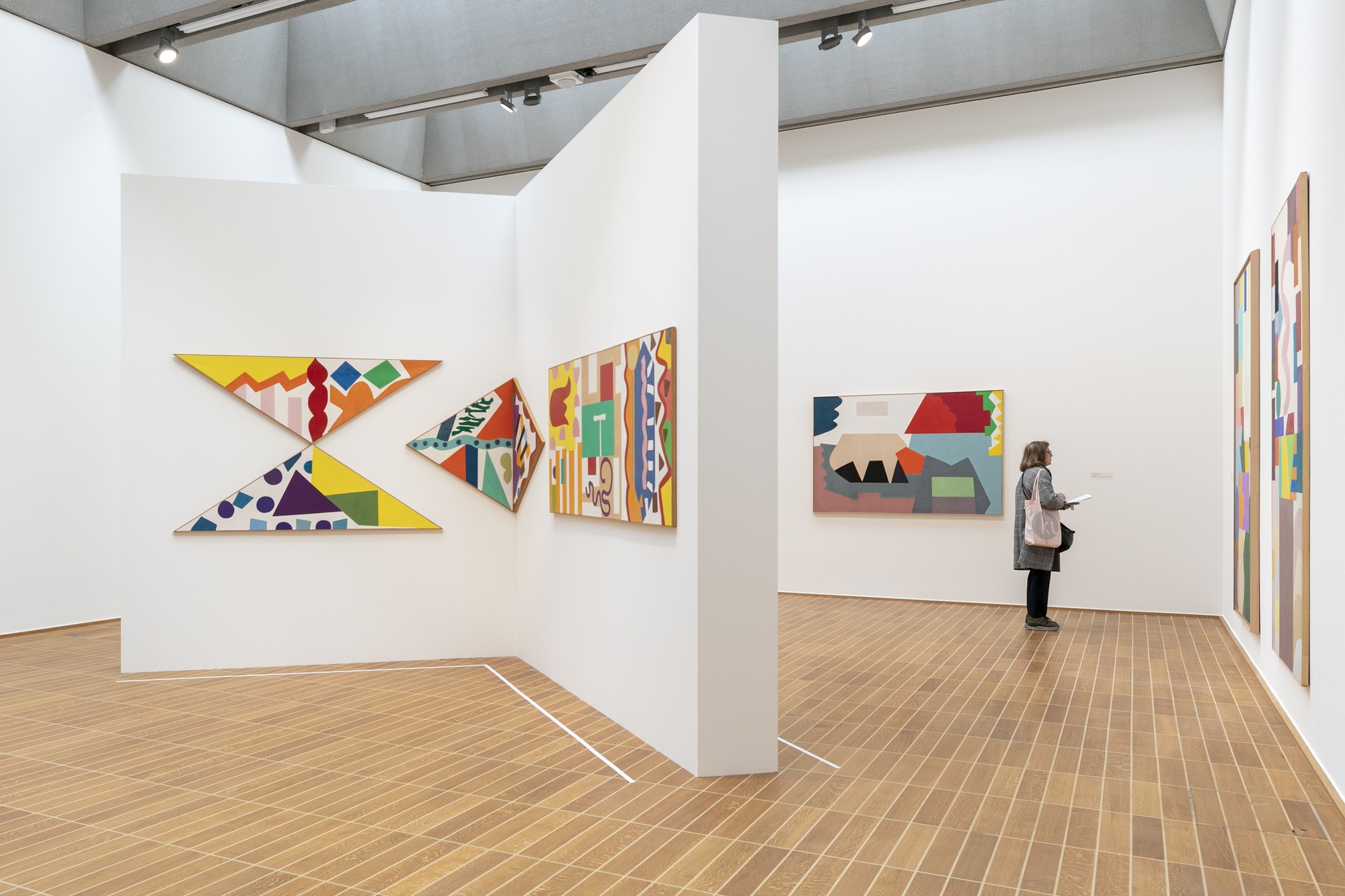
Title: Sylvia's White
Artists & participants: Shirley Jaffe
Creation time: 1975
Material / technique: Öl auf Leinwand
Measures: 130.2 x 195 cm
Object-ID: 54781
Copyright: © ProLitteris, Zürich
Photo credit: Julian Salinas
Artists & participants: Shirley Jaffe
Creation time: 1975
Material / technique: Öl auf Leinwand
Measures: 130.2 x 195 cm
Object-ID: 54781
Copyright: © ProLitteris, Zürich
Photo credit: Julian Salinas
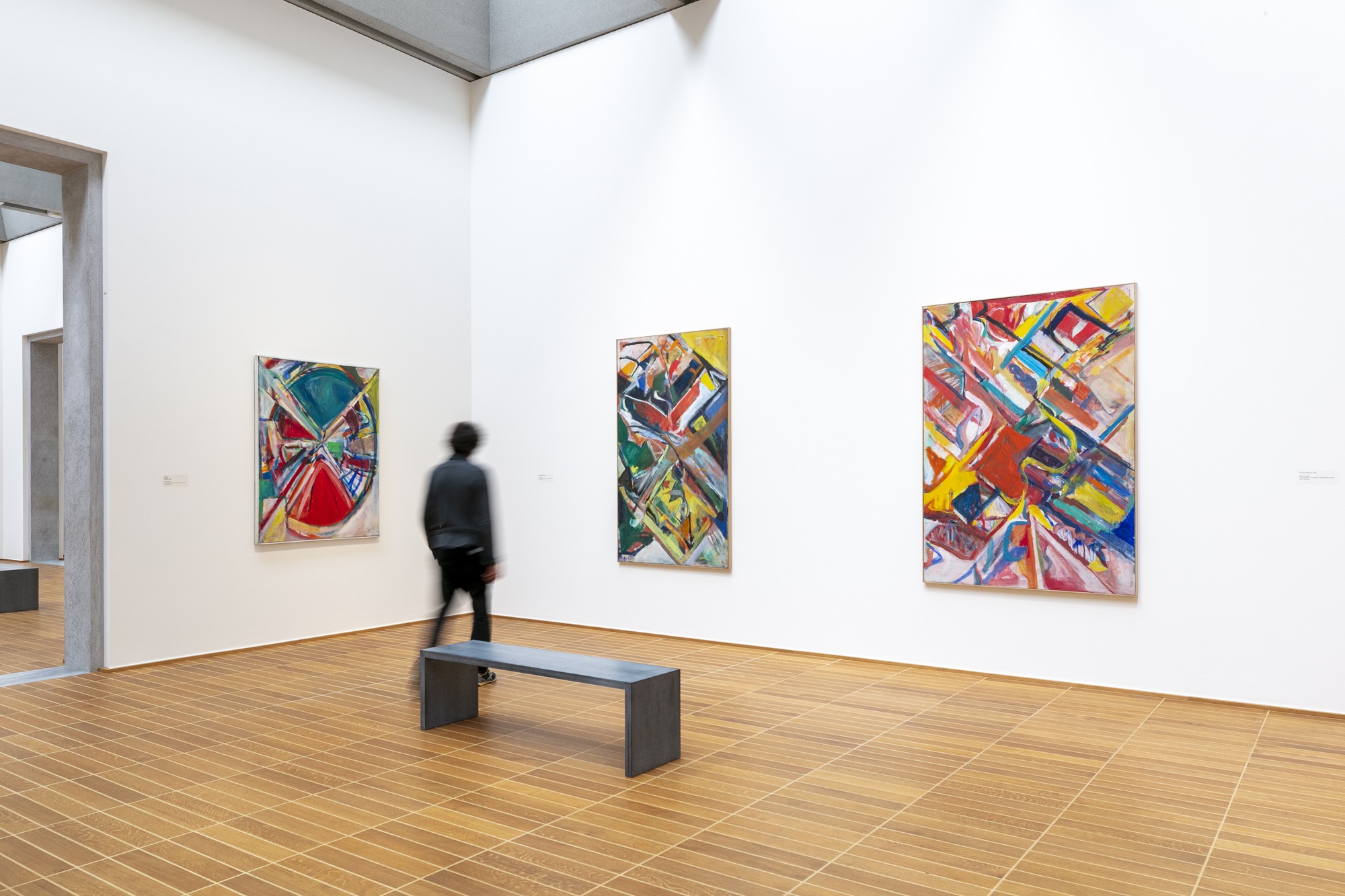
Title: Long Black
Artists & participants: Shirley Jaffe
Creation time: 1965-1966
Material / technique: Öl auf Leinwand
Measures: 195 x 114 cm
Object-ID: 54776
Copyright: © ProLitteris, Zürich
Photo credit: Julian Salinas
Artists & participants: Shirley Jaffe
Creation time: 1965-1966
Material / technique: Öl auf Leinwand
Measures: 195 x 114 cm
Object-ID: 54776
Copyright: © ProLitteris, Zürich
Photo credit: Julian Salinas
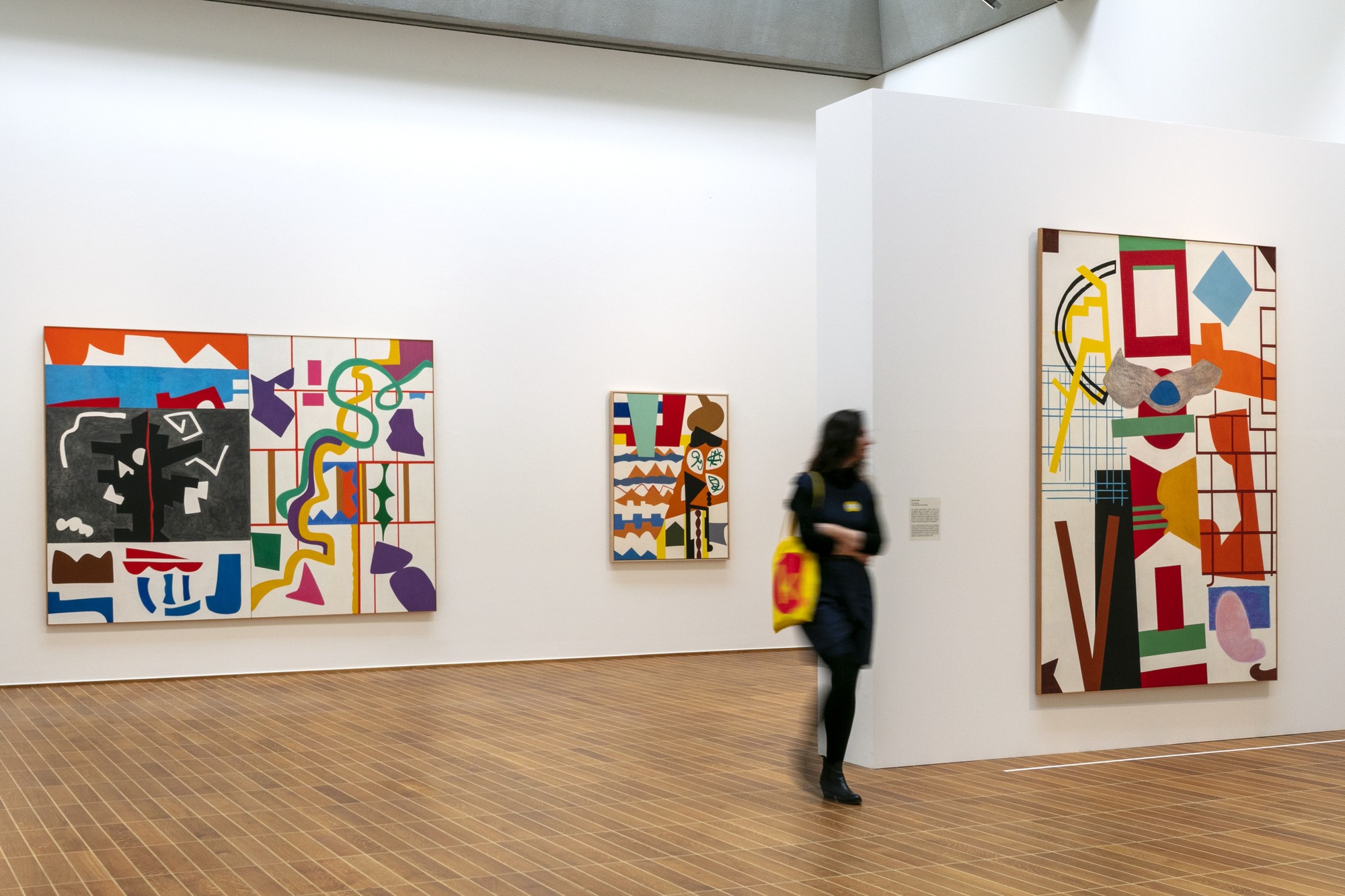
Title: The Chinese Mountain
Artists & participants: Shirley Jaffe
Creation time: 2004-2005
Material / technique: Öl auf Leinwand
Measures: 146 x 114 cm
Object-ID: 54844
Copyright: © ProLitteris, Zürich
Photo credit: Julian Salinas
Artists & participants: Shirley Jaffe
Creation time: 2004-2005
Material / technique: Öl auf Leinwand
Measures: 146 x 114 cm
Object-ID: 54844
Copyright: © ProLitteris, Zürich
Photo credit: Julian Salinas
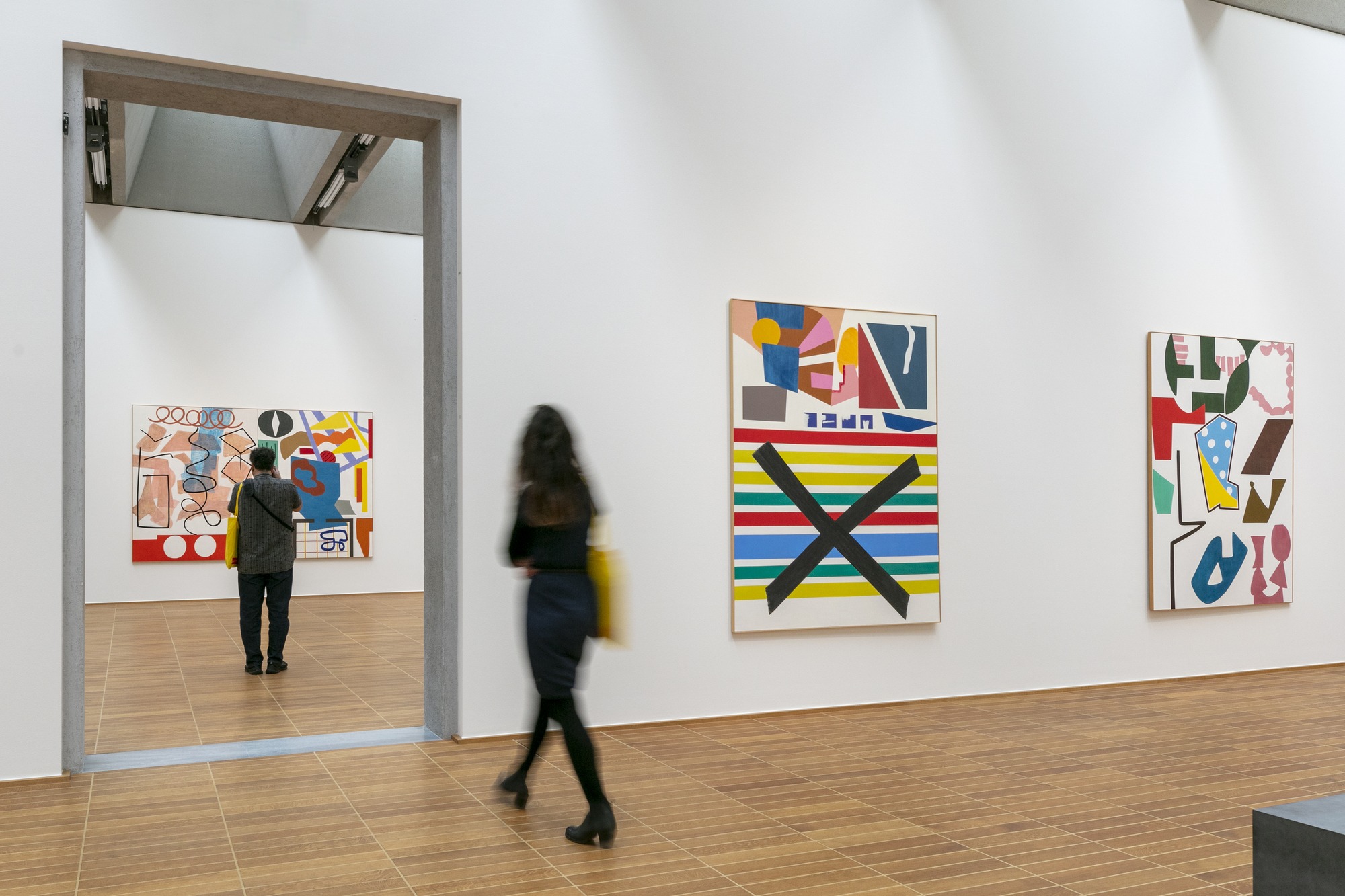
Title: X, encore
Artists & participants: Shirley Jaffe
Creation time: 2007
Material / technique: Öl auf Leinwand
Measures: Bild: 210 x 160 cm
Object-ID: 54356
Copyright: © ProLitteris, Zürich
Credit line: Private Collection New York
Photo credit: Julian Salinas
Artists & participants: Shirley Jaffe
Creation time: 2007
Material / technique: Öl auf Leinwand
Measures: Bild: 210 x 160 cm
Object-ID: 54356
Copyright: © ProLitteris, Zürich
Credit line: Private Collection New York
Photo credit: Julian Salinas

Title: Arcueil Yellow
Artists & participants: Shirley Jaffe
Creation time: 1956
Material / technique: Öl auf Leinwand
Measures: 199 x 197 cm
Object-ID: 54122
Copyright: © ProLitteris, Zürich
Credit line: Centre Pompidou, Musée national d'art moderne, Paris
Photo credit: Julian Salinas
Artists & participants: Shirley Jaffe
Creation time: 1956
Material / technique: Öl auf Leinwand
Measures: 199 x 197 cm
Object-ID: 54122
Copyright: © ProLitteris, Zürich
Credit line: Centre Pompidou, Musée national d'art moderne, Paris
Photo credit: Julian Salinas
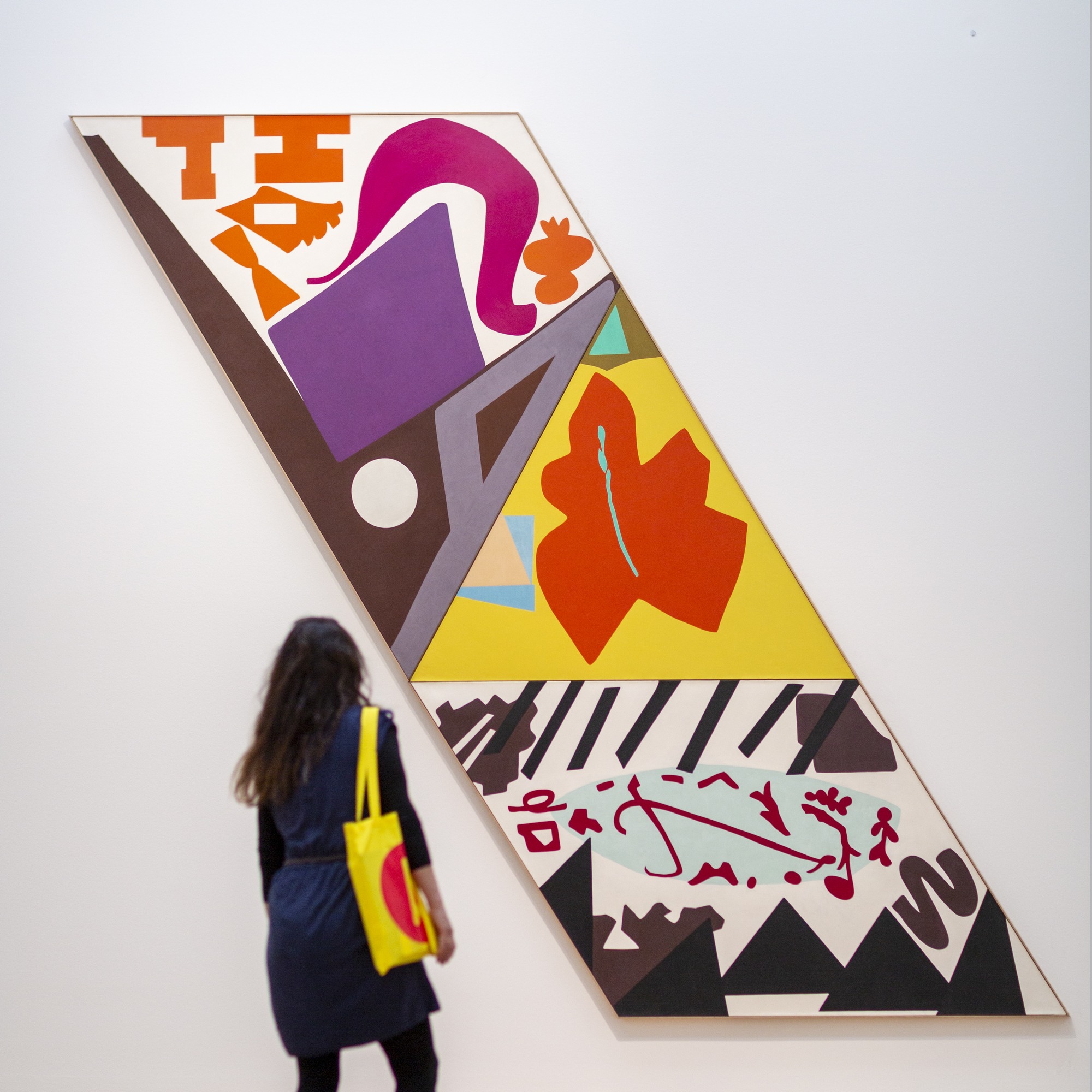
Title: La Mer Rouge
Artists & participants: Shirley Jaffe
Creation time: 1980
Material / technique: Öl auf Leinwand
Measures: 340 x 170 cm
Object-ID: 55203
Copyright: © ProLitteris, Zürich
Credit line: Courtesy Shirley Jaffe Estate & Galerie Nathalie Obadia, Paris / Bruxelles
Photo credit: Julian Salinas
Artists & participants: Shirley Jaffe
Creation time: 1980
Material / technique: Öl auf Leinwand
Measures: 340 x 170 cm
Object-ID: 55203
Copyright: © ProLitteris, Zürich
Credit line: Courtesy Shirley Jaffe Estate & Galerie Nathalie Obadia, Paris / Bruxelles
Photo credit: Julian Salinas
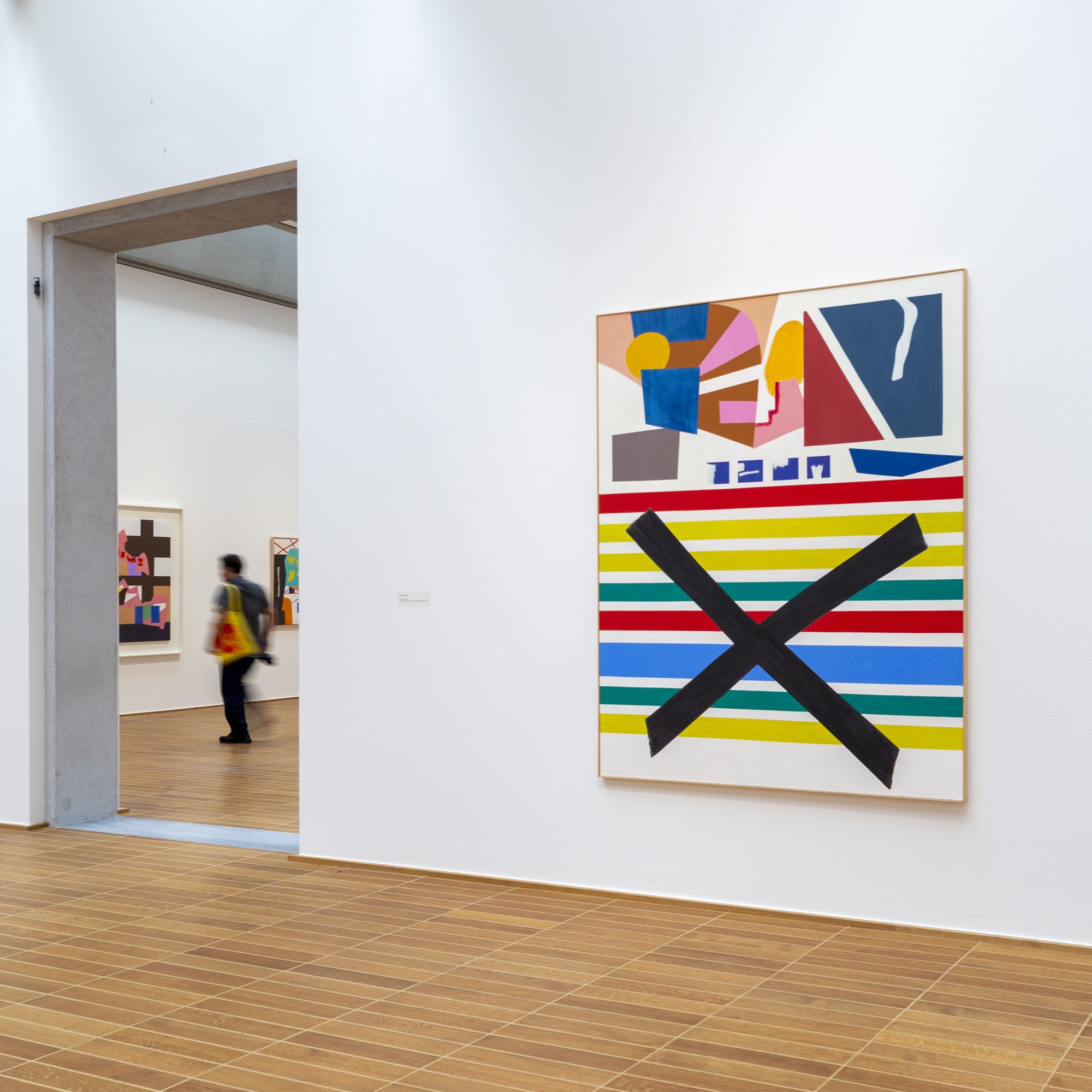
Title: X, encore
Artists & participants: Shirley Jaffe
Creation time: 2007
Material / technique: Öl auf Leinwand
Measures: Bild: 210 x 160 cm
Object-ID: 54356
Copyright: © ProLitteris, Zürich
Credit line: Private Collection New York
Photo credit: Julian Salinas
Artists & participants: Shirley Jaffe
Creation time: 2007
Material / technique: Öl auf Leinwand
Measures: Bild: 210 x 160 cm
Object-ID: 54356
Copyright: © ProLitteris, Zürich
Credit line: Private Collection New York
Photo credit: Julian Salinas

Title: The Red Diamond
Artists & participants: Shirley Jaffe
Creation time: 1964
Material / technique: Öl auf Leinwand
Measures: 195 x 135 cm
Object-ID: 54161
Copyright: © ProLitteris, Zürich
Photo credit: Julian Salinas
Artists & participants: Shirley Jaffe
Creation time: 1964
Material / technique: Öl auf Leinwand
Measures: 195 x 135 cm
Object-ID: 54161
Copyright: © ProLitteris, Zürich
Photo credit: Julian Salinas

Title: Four Squares Black
Artists & participants: Shirley Jaffe
Creation time: 1993
Material / technique: Öl auf Leinwand
Measures: Bild: 214 x 180 cm
Object-ID: 54346
Copyright: © ProLitteris, Zürich
Photo credit: Julian Salinas
Artists & participants: Shirley Jaffe
Creation time: 1993
Material / technique: Öl auf Leinwand
Measures: Bild: 214 x 180 cm
Object-ID: 54346
Copyright: © ProLitteris, Zürich
Photo credit: Julian Salinas

Title: Arcueil Yellow
Artists & participants: Shirley Jaffe
Creation time: 1956
Material / technique: Öl auf Leinwand
Measures: 199 x 197 cm
Object-ID: 54122
Copyright: © ProLitteris, Zürich
Credit line: Centre Pompidou, Musée national d'art moderne, Paris
Photo credit: Centre Pompidou, MNAM-CCI/ Audrey Laurans
Artists & participants: Shirley Jaffe
Creation time: 1956
Material / technique: Öl auf Leinwand
Measures: 199 x 197 cm
Object-ID: 54122
Copyright: © ProLitteris, Zürich
Credit line: Centre Pompidou, Musée national d'art moderne, Paris
Photo credit: Centre Pompidou, MNAM-CCI/ Audrey Laurans
Curators: Olga Osadtschy (Kunstmuseum Basel), Frédéric Paul (Musée national d’art moderne Centre Pompidou)
In Shirley Jaffe. Form as Experiment, the Kunstmuseum Basel presents the artist’s first retrospective in Switzerland, inviting audiences to discover the work of an independent creative mind whose courage made her a role model for many younger artists. Born and raised in the United States, Jaffe settled in Paris in the 1950s and over the years devised an unmistakable personal visual idiom. Conceived in cooperation with the Centre Pompidou and the Musée Matisse, Nice, the exhibition showcases 113 works, from Jaffe’s early contributions to Abstract Expressionism to the geometric paintings in large formats that are characteristic of her late oeuvre.
Shirley Jaffe (née Sternstein, 1923–2016) was born in Elizabeth, N.J., and studied at the Cooper Union in New York. In 1949, the so-called G.I. Bill, which provided benefits for American veterans returning from the war, enabled her and her husband, the journalist Irving Jaffe, to move to the French capital. The marriage did not last, but Jaffe stayed. She soon made friends among the many US-American artists living in postwar Paris, including Al Held, Norman Bluhm, Kimber Smith, Sam Francis, Joan Mitchell, and the Canadian Jean-Paul Riopelle. Her Abstract Expressionist pictures from this period, such as Arcueil Yellow (1956), recall geological formations. As the gestural quality of her work became increasingly prominent, her brushwork and palette grew in complexity (see, e.g., East Meets West, 1962).
In 1958, Darthea Speyer organized an exhibition at the Centre Culturel Américain in Paris that featured Shirley Jaffe, Sam Francis and Kimber Smith. Francis introduced Jaffe to the curator Arnold Rüdlinger, who, during his tenures as director of Kunsthalle Bern (1946–1955) and Kunsthalle Basel (1955–1967), championed innovations that lastingly modernized the Swiss arts scene. Rüdlinger displayed her pictures in several group exhibitions and acquired two of her works for the legendary private collection La Peau de l’Ours, which Rüdlinger founded in Basel in 1954 with initially seven art lovers from Switzerland. Rüdlinger served as the collection’s conservator. In 1964, its complete holdings were shown at Kunsthalle Basel.
Meanwhile, Jaffe also presented her work in a series of exhibitions at various galleries in Switzerland, including Galerie Handschin, Basel, and Galerie Klipstein & Kornfeld, Bern. In 1969, a first painting by her entered a public collection in France; the Musée national d’art moderne started acquiring the artist’s works in 1985. After an extensive posthumous gift of Jaffe’s works in 2019, the Centre Pompidou now has the single largest body of her art in an institutional collection. The bulk of the artist’s personal archive is preserved for scholarly study at the Bibliothèque Kandinsky.
Leaving Abstract Expressionism behind …
In the 1960s, Jaffe turned her back on her early work in the Abstract Expressionist vein. This shift in her art began in 1963, when she went to West Berlin on a grant from the Ford Foundation. During the year and a half she spent there before returning to Paris, she introduced simple and clearly identifiable forms to her paintings, counterbalancing their already geometric quality with yet bolder gestures. Luminous colors like those in Big Square (1965) underscore the structures of her pictures.
A second, even more radical transformation commenced in 1968. She now altogether renounced the gestural dimension, instead relying on lucid geometry and muted hues to produce arrangements of flat color fields. This embrace of side-by-side composition went hand in hand with the decision to work with proximity and distance rather than intensity to infuse the interrelations between colors with dynamic energy. Boulevard Montparnasse (1968) is a characteristic example of this development.
In 1969, Jaffe moved into a small studio on Rue Saint-Victor in the 5th arrondissement, where she lived and worked almost until her last breath in 2016. Many artists visited her there over the years, among them Polly Apfelbaum, Beatriz Milhazes, und Sarah Morris. Younger generations, who discovered her work at Galerie Nathalie Obadia, Paris or Brussels, and elsewhere, embraced her as a model and point of reference because she had had the gumption to abandon Abstract Expressionism and forge a new path.
… toward a personal style
In the 1970s, Jaffe fleshes out her personal style, which is defined by marked contours. Impromptu forms derived from classic geometry, each constituting its own color field,
are the hallmark of this stage in the evolution of her art. Where lines appear on an expanse of color, they neither transgress its bounds nor intersect one another. Toward the end of this period, Jaffe moreover seeks to break the constraints the rectangular frame.
The work she makes starting in 1983 is set apart by the salience of the color white, which initially serves to separate the forms from each other in order to lend them greater independence (see, e.g., Sailing, 1985). The artist’s work from these years also shows her exploring ways in which white can contribute to the dynamic distribution of the color fields on the painting’s surface. Previously segregated forms now sometimes abut in daring geometric constellations. White, in these works, in not merely a background color. It reveals nuances that vary from painting to painting—no two pictures are executed with white paint of the exact same composition. Jaffe furthermore enhances her works with long winding or angular lines that extend across several expanses of color, heightening the impression of overlapping fields (see, e.g., All Together, 1995).
A final innovation that first appears in 1995 and more forcefully from 2001 onward consists in modulations of the color density within a form. The hitherto organized-dynamic chaos of the paintings and the strictly uniform color fields are leavened by traces of brushwork or diffuse paint structures.
The presentation is complemented by studio notes in the artist’s hand—Jaffe diligently recorded the slow gestation of her works—and private archival materials from her estate.
In the past two years, the Kunstmuseum Basel was able to acquire two paintings by Shirley Jaffe. In Medrano (1958) and Big Square (1965), the museum now has an early work and a work from the crucial period when she began developing her own style. The museum also owns four works on paper from the late 1950s.
Stories behind the pictures
The project Stories behind the pictures. Remembering Shirley Jaffe invited contemporaries from Jaffe's inner circle to look at the artist's life and work from different perspectives. A selection of the resulting material will be included into the exhibition at the Kunstmuseum Basel as an audio installation. All the material from this oral (art) history project will be accessible on the museum's website.
Publication
The richly illustrated publication, to be released by Christoph Merian Verlag, combines a collage of testimonials from Shirley Jaffe’s friends and colleagues with original art-historical research based on previously unpublished documents from the artist’s estate. With contributions by Svetlana Alpers, Claudine Grammont, Shirley Jaffe, Robert Kushner, Olga Osadtschy, Frédéric Paul, and Molly Warnock.
The exhibition Shirley Jaffe. Form as Experiment is organized by the Kunstmuseum Basel in collaboration with the Centre Pompidou, Paris, and the Musée Matisse, Nice. The exhibition Shirley Jaffe. An American Woman in Paris was shown at the Centre Pompidou from April 20 until August 29, 2022. It will be on display at the Musée Matisse from October 11, 2023, until January 8, 2024.
The exhibition is supported by:
Terra Foundation for American Art
Foundation for the Kunstmuseum Basel
In Shirley Jaffe. Form as Experiment, the Kunstmuseum Basel presents the artist’s first retrospective in Switzerland, inviting audiences to discover the work of an independent creative mind whose courage made her a role model for many younger artists. Born and raised in the United States, Jaffe settled in Paris in the 1950s and over the years devised an unmistakable personal visual idiom. Conceived in cooperation with the Centre Pompidou and the Musée Matisse, Nice, the exhibition showcases 113 works, from Jaffe’s early contributions to Abstract Expressionism to the geometric paintings in large formats that are characteristic of her late oeuvre.
Shirley Jaffe (née Sternstein, 1923–2016) was born in Elizabeth, N.J., and studied at the Cooper Union in New York. In 1949, the so-called G.I. Bill, which provided benefits for American veterans returning from the war, enabled her and her husband, the journalist Irving Jaffe, to move to the French capital. The marriage did not last, but Jaffe stayed. She soon made friends among the many US-American artists living in postwar Paris, including Al Held, Norman Bluhm, Kimber Smith, Sam Francis, Joan Mitchell, and the Canadian Jean-Paul Riopelle. Her Abstract Expressionist pictures from this period, such as Arcueil Yellow (1956), recall geological formations. As the gestural quality of her work became increasingly prominent, her brushwork and palette grew in complexity (see, e.g., East Meets West, 1962).
In 1958, Darthea Speyer organized an exhibition at the Centre Culturel Américain in Paris that featured Shirley Jaffe, Sam Francis and Kimber Smith. Francis introduced Jaffe to the curator Arnold Rüdlinger, who, during his tenures as director of Kunsthalle Bern (1946–1955) and Kunsthalle Basel (1955–1967), championed innovations that lastingly modernized the Swiss arts scene. Rüdlinger displayed her pictures in several group exhibitions and acquired two of her works for the legendary private collection La Peau de l’Ours, which Rüdlinger founded in Basel in 1954 with initially seven art lovers from Switzerland. Rüdlinger served as the collection’s conservator. In 1964, its complete holdings were shown at Kunsthalle Basel.
Meanwhile, Jaffe also presented her work in a series of exhibitions at various galleries in Switzerland, including Galerie Handschin, Basel, and Galerie Klipstein & Kornfeld, Bern. In 1969, a first painting by her entered a public collection in France; the Musée national d’art moderne started acquiring the artist’s works in 1985. After an extensive posthumous gift of Jaffe’s works in 2019, the Centre Pompidou now has the single largest body of her art in an institutional collection. The bulk of the artist’s personal archive is preserved for scholarly study at the Bibliothèque Kandinsky.
Leaving Abstract Expressionism behind …
In the 1960s, Jaffe turned her back on her early work in the Abstract Expressionist vein. This shift in her art began in 1963, when she went to West Berlin on a grant from the Ford Foundation. During the year and a half she spent there before returning to Paris, she introduced simple and clearly identifiable forms to her paintings, counterbalancing their already geometric quality with yet bolder gestures. Luminous colors like those in Big Square (1965) underscore the structures of her pictures.
A second, even more radical transformation commenced in 1968. She now altogether renounced the gestural dimension, instead relying on lucid geometry and muted hues to produce arrangements of flat color fields. This embrace of side-by-side composition went hand in hand with the decision to work with proximity and distance rather than intensity to infuse the interrelations between colors with dynamic energy. Boulevard Montparnasse (1968) is a characteristic example of this development.
In 1969, Jaffe moved into a small studio on Rue Saint-Victor in the 5th arrondissement, where she lived and worked almost until her last breath in 2016. Many artists visited her there over the years, among them Polly Apfelbaum, Beatriz Milhazes, und Sarah Morris. Younger generations, who discovered her work at Galerie Nathalie Obadia, Paris or Brussels, and elsewhere, embraced her as a model and point of reference because she had had the gumption to abandon Abstract Expressionism and forge a new path.
… toward a personal style
In the 1970s, Jaffe fleshes out her personal style, which is defined by marked contours. Impromptu forms derived from classic geometry, each constituting its own color field,
are the hallmark of this stage in the evolution of her art. Where lines appear on an expanse of color, they neither transgress its bounds nor intersect one another. Toward the end of this period, Jaffe moreover seeks to break the constraints the rectangular frame.
The work she makes starting in 1983 is set apart by the salience of the color white, which initially serves to separate the forms from each other in order to lend them greater independence (see, e.g., Sailing, 1985). The artist’s work from these years also shows her exploring ways in which white can contribute to the dynamic distribution of the color fields on the painting’s surface. Previously segregated forms now sometimes abut in daring geometric constellations. White, in these works, in not merely a background color. It reveals nuances that vary from painting to painting—no two pictures are executed with white paint of the exact same composition. Jaffe furthermore enhances her works with long winding or angular lines that extend across several expanses of color, heightening the impression of overlapping fields (see, e.g., All Together, 1995).
A final innovation that first appears in 1995 and more forcefully from 2001 onward consists in modulations of the color density within a form. The hitherto organized-dynamic chaos of the paintings and the strictly uniform color fields are leavened by traces of brushwork or diffuse paint structures.
The presentation is complemented by studio notes in the artist’s hand—Jaffe diligently recorded the slow gestation of her works—and private archival materials from her estate.
In the past two years, the Kunstmuseum Basel was able to acquire two paintings by Shirley Jaffe. In Medrano (1958) and Big Square (1965), the museum now has an early work and a work from the crucial period when she began developing her own style. The museum also owns four works on paper from the late 1950s.
Stories behind the pictures
The project Stories behind the pictures. Remembering Shirley Jaffe invited contemporaries from Jaffe's inner circle to look at the artist's life and work from different perspectives. A selection of the resulting material will be included into the exhibition at the Kunstmuseum Basel as an audio installation. All the material from this oral (art) history project will be accessible on the museum's website.
Publication
The richly illustrated publication, to be released by Christoph Merian Verlag, combines a collage of testimonials from Shirley Jaffe’s friends and colleagues with original art-historical research based on previously unpublished documents from the artist’s estate. With contributions by Svetlana Alpers, Claudine Grammont, Shirley Jaffe, Robert Kushner, Olga Osadtschy, Frédéric Paul, and Molly Warnock.
The exhibition Shirley Jaffe. Form as Experiment is organized by the Kunstmuseum Basel in collaboration with the Centre Pompidou, Paris, and the Musée Matisse, Nice. The exhibition Shirley Jaffe. An American Woman in Paris was shown at the Centre Pompidou from April 20 until August 29, 2022. It will be on display at the Musée Matisse from October 11, 2023, until January 8, 2024.
The exhibition is supported by:
Terra Foundation for American Art
Foundation for the Kunstmuseum Basel
